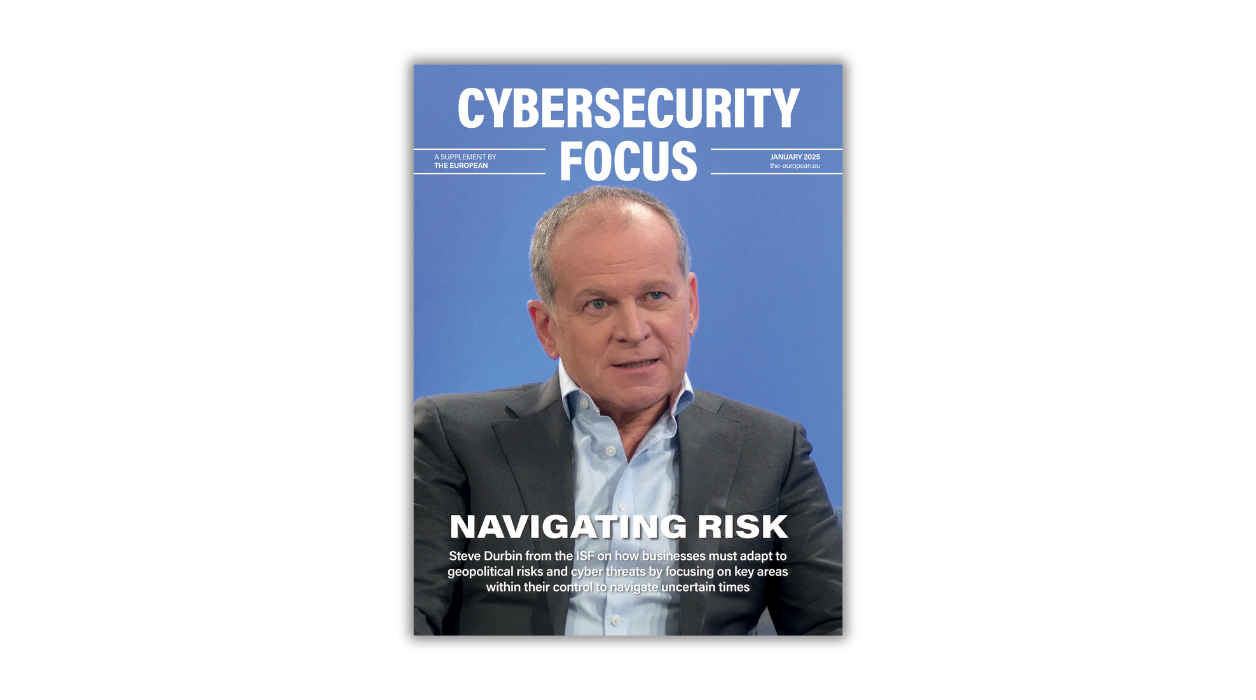Make innovation part of your DNA

John E. Kaye
- Published
- Business, Business Transformation, Home

While there will never be an exact formula for innovation, there are certainly ways to embed it throughout your organisation. Finbarr Toesland speaks to those who know how
It is difficult to find a business leader who doesn’t believe that innovation is essential to the success of their organisation. As companies continue to recover from the damaging impacts of the covid pandemic, the value of agility, innovation and resilience have become increasingly clear. Yet, creating a genuinely innovative culture is no small task, leaving many innovation initiatives and programmes falling flat.
At a time of digital disruption and technological change, there is seemingly no shortage of ways to embrace innovation in business. However, finding the right innovation mix requires buy-in from across the business and a comprehensive strategy. While the journey to innovation can be long and require a great deal of commitment, the benefits of pursuing this goal are worth the investment. But first, with a term so ubiquitous, it might also be useful to define what we mean by innovation. In a business context, according to McKinsey, innovation is “the ability to conceive, develop, deliver, and scale new products, services, processes, and business models for customers.”
Furthermore, research from McKinsey finds that companies that are able to master the essentials of innovation recorded 2.4 times higher economic profit, compared to companies that do not. Recent disruptions have shown business leaders that being slow to rebound from crises can result in disaster, and conventional ways of doing business can rapidly change, virtually overnight.
Culture of innovation
At a time when modern businesses are facing many pressing challenges, efforts to foster a workplace where innovation is the norm rather than an afterthought can add to an already heavy workload for staff. Understanding exactly what innovation looks like will differ for each organisation, with transforming an entire business clearly being more difficult that launching a one-off innovation project. “There are many more complexities in changing mindsets and making innovation a part of an organisation’s DNA rather than a reactionary salve to external pressures,” says Dr Christian Mühlroth, CEO of ITONICS, a provider of innovation management software.
In Mühlroth’s experience, once there is a commitment in place from leadership, just having the right set of tools in place is enough to kick-start a transition and begin the innovation journey. “Adopt a set of tools that reflect the characteristics you want to nurture amongst your teams. You want a culture of innovation that promotes creativity, collaboration, knowledge exchange, data-driven decision-making, speed, flexibility, iteration? Make sure your tools facilitate these capabilities,” he explains.
In practice, achieving innovation will require a culture of creativity where failures are expected as part of the journey towards success. In organisations where staff regularly play the blame game, where any mistakes or accidents are pounced upon, employees won’t feel confident in trying new ideas that may benefit the business, but come with some level of risk.
Open communication is at the core of any innovation strategy. Achieving complete transparency around both failure and success is of paramount importance if staff are to fully understand what works and what doesn’t. Embedding effective communication practices means going beyond just implementing a strong communication platform, with diverse viewpoints, high engagement and mutual support being the hallmarks of innovative communication ecosystems.
“A culture hinges on certain values and behaviours that can be embedded by providing employees with time, space and infrastructure,” explains Michel van Hove, CEO of Strategos, a strategy and innovation consultancy.
In Hove’s experience, clients often ask how to foster a culture of innovation, but it’s not easy to break down this answer into bite-size chunks. For employees to develop their own ideas into commercially viable propositions, staff need to be allowed the time to imagine and experiment, alongside the space and the scope to think innovatively and challenge company and industry conventions, says Hove.
“It’s important to provide a system of support to develop the required skills, [and the] resources to follow through on promising ideas and process that allows for transparent and fast decision making, innovation process, and portfolio management,” he adds. More and more organisations are seeing the value of innovation – especially as simply keeping up with industry trends and competition is becoming increasingly challenging.
According to Boston Consulting Group’s 2023 global survey, almost 80% of companies rank innovation in their top three priorities, with more than 40% of respondents on course to significantly increase spending in this area.
Companies are committing to higher levels of spending on innovative activities as its expected that new products and services will be generated that pay dividend. Of course, it can take some time to scale innovative ideas and bring them to market, with most revenue benefits happening in the medium to long-term.
Quick fix?
Searching for technologies and platforms that have the potential to unlock innovation is no easy task. If businesses don’t deliver a clear vision of exactly what the business is trying to achieve by adopting new solutions, it can be easy to become overwhelmed by too many ill-suited products.
For Adam Glaser, SVP of Product Management at Appian, a low-code automation platform, when new customers come to the company they tend to be looking for a quick solution to a problem. “If they could solve it quickly, they wouldn’t be talking to us,” he adds.
Unlocking “quick wins”, that include using automation to increase the speed of certain tasks, so that staff’s valuable time can be better utilised, is often a good place to start. Before businesses decide to double-down on innovative initiatives, they often find themselves with either a technology solution that doesn’t work or they have a technology provider that can’t get them over the finish line fast enough.
For many enterprises, achieving a good technology fit is only a small part of the innovation puzzle. Shifting corporate culture, often rather dramatically, to become more agile and able to make changes quickly can be challenging, especially for larger companies.
Glaser brings up the example of a business that is used to embarking on projects that take 12 months to complete, and hears from the team at Appian that this needs to be happen in weeks, or months. But for firms that have been burned by the inability to adapt whatever technologies they have in their portfolio to the changing conditions, they can hold some resistance to change.
“We find some challenges with organisational culture and as we try to shift staff to ways they are not used to working, that’s sometimes the hardest task compared to the technology piece,” he explains.
At almost every level of the innovation process, agility and the ability to adapt to new technologies is essential. Staff members that have little experience in working within fast-moving corporate settings may need additional support to bring them up to speed with digital transformation.
Replacing conventional ways of thinking within an organisation will clearly not be an overnight task, with all employees from the C-suite to new starters needing to work consistently on following an innovation mindset where experimentation is encouraged, not shied away from.
“Building a simple application, that’s not hard. Getting businesses to understand that it can be deployed in weeks and they need to rethink how they’re used to prioritising things, that’s hard,” Glaser adds.

Overcoming obstacles
As companies grow larger, bureaucratic barriers to innovation can become more difficult to overcome. Multinational firms across several timezones, incorporating different cultural norms, face practical issues ensuring that cultural transformations are maintained.
While smaller organisations may be better placed to quickly implement innovative practices, these firms often have fewer resources and institutional knowledge, which can slow down the transformation process. For enterprises that operate within industries that are highly regulated, additional concerns may arise around taking innovative risks due to the stringent standards that must be followed.
The same innovation principles are applied to enterprises, no matter their size, but the exact execution will differ. “When we work with larger and more complex organisations there is more emphasis on governance, processes, and alignment with the enterprise strategy to make it all work and get people on board,” adds Hove.
Mühlroth, CEO of ITONICS, agrees that a clear strategic focus is necessary to help the most promising innovation initiatives receive adequate support, with tough decisions needing to be made quickly and efficiency. “Losing sight of long-term goals, allowing quick wins to cannibalise future ambitions, is a major barrier to innovation for many companies,” he says.
Research published by PwC in its ‘Breakthrough innovation and growth’ report find that 79% of the most innovative companies have well-defined innovation strategies, compared with only 47% of the least innovative companies.
A switched-on leadership team is vital to any innovation programme, alongside a robust oversight committee that supports decision making capabilities and helps turn long-term strategies into actionable initiatives. “Overcoming these challenges and achieving oversight, as well as a long-term perspective and strategic focus, requires an equally robust end-to-end innovation governance framework,” concludes Mühlroth.
Sign up to The European Newsletter
RECENT ARTICLES
-
 UK government sets up Women in Tech taskforce amid gender imbalance concerns
UK government sets up Women in Tech taskforce amid gender imbalance concerns -
 Liechtenstein lands AAA rating again as PM hails “exceptional stability”
Liechtenstein lands AAA rating again as PM hails “exceptional stability” -
 The Parisian business school quietly reinventing the MBA
The Parisian business school quietly reinventing the MBA -
 UK entrepreneur who founded £1bn firm acquires UAE amateur golf leader to launch world amateur Super League
UK entrepreneur who founded £1bn firm acquires UAE amateur golf leader to launch world amateur Super League -
 Why your home is the best place to teach children leadership
Why your home is the best place to teach children leadership -
 Inside the Spring 2025 Edition of The European
Inside the Spring 2025 Edition of The European -
 The Paris MBA designed for real-world leadership
The Paris MBA designed for real-world leadership -
 Soft2Bet reflects on eight years of leadership and philanthropy in new film featuring CEO Uri Poliavich
Soft2Bet reflects on eight years of leadership and philanthropy in new film featuring CEO Uri Poliavich -
 Global Banking School celebrates ‘milestone’ anniversary
Global Banking School celebrates ‘milestone’ anniversary -
 Saudi Arabia hosts the fourth Riyadh International Humanitarian Forum
Saudi Arabia hosts the fourth Riyadh International Humanitarian Forum -
 New York Congresswoman pushes for Trump’s birthday to be enshrined as federal holiday
New York Congresswoman pushes for Trump’s birthday to be enshrined as federal holiday -
 Red light, green bite: Netflix restaurant opens in Vegas
Red light, green bite: Netflix restaurant opens in Vegas -
 Read our Cybersecurity Focus supplement, featuring insights from Information Security Forum
Read our Cybersecurity Focus supplement, featuring insights from Information Security Forum -
 Davos World Economic Forum 2025: Collaboration for the Intelligent Age
Davos World Economic Forum 2025: Collaboration for the Intelligent Age -
 The European releases its Winter 2024/25 edition
The European releases its Winter 2024/25 edition -
 Read our FDI Focus supplement, featuring insights from Michael Lohan of IDA Ireland
Read our FDI Focus supplement, featuring insights from Michael Lohan of IDA Ireland -
 PizzaExpress to Expand Dough Base Stateside
PizzaExpress to Expand Dough Base Stateside -
 The two core skills middle managers need to navigate stormy weather
The two core skills middle managers need to navigate stormy weather -
 The Role of Financial Regulations in the Online Casino Industry
The Role of Financial Regulations in the Online Casino Industry -
 How to become a game-changer
How to become a game-changer -
 Taking the risk out of BOP ventures
Taking the risk out of BOP ventures -
 Releaf leading the way with marketing
Releaf leading the way with marketing -
 A model for building winning teams
A model for building winning teams -
 Get comfortable with not knowing
Get comfortable with not knowing -
 Preparing students today to lead tomorrow’s digital transformation
Preparing students today to lead tomorrow’s digital transformation


























